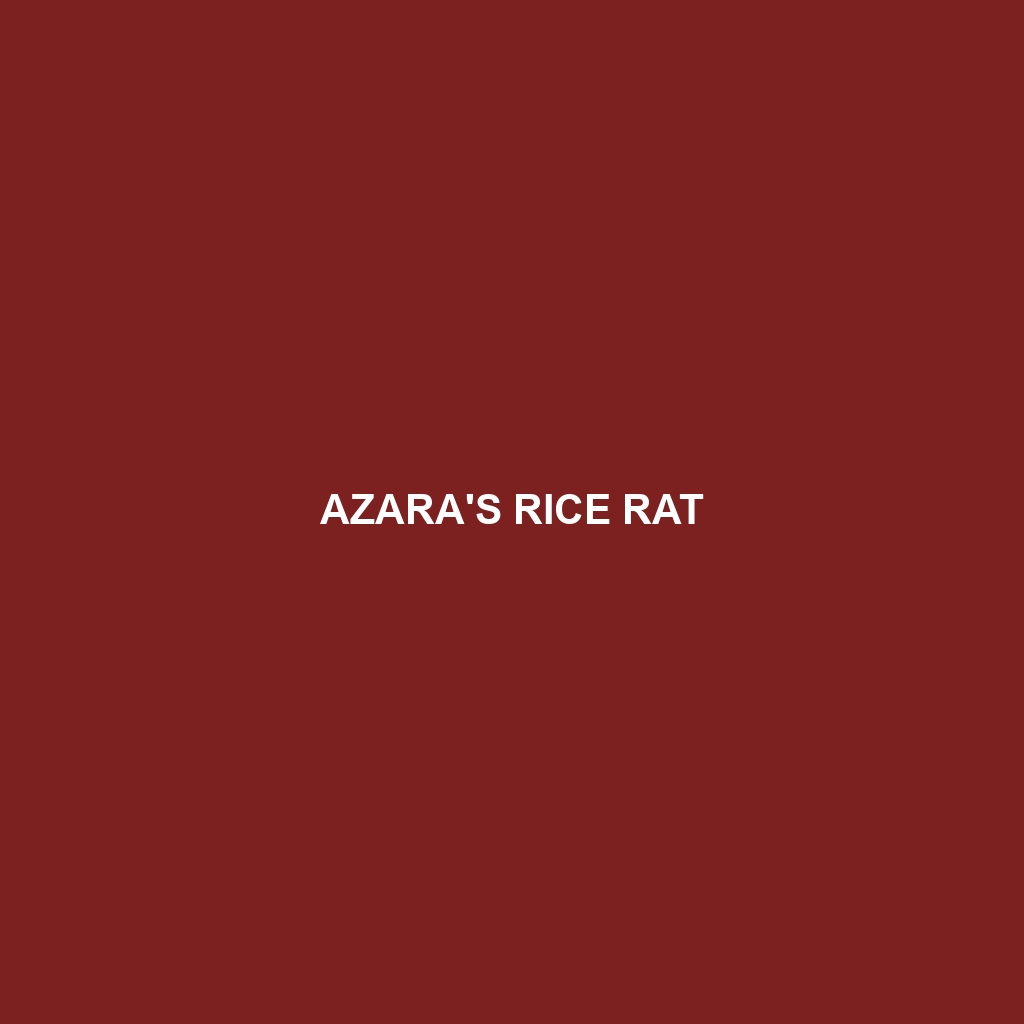Azara’s Rice Rat (Oligoryzomys azarae)
Common Name: Azara’s Rice Rat
Scientific Name: Oligoryzomys azarae
Habitat:
Azara’s Rice Rat is primarily found in various parts of South America, particularly in regions such as Argentina, Brazil, and Paraguay. It thrives in freshwater wetlands including marshes, swamps, and rice fields, often favoring areas with dense vegetation that provide both shelter and foraging opportunities. These habitats are typically characterized by rich biodiversity and a mix of aquatic and terrestrial environments.
Physical Characteristics:
This medium-sized rodent measures between 20 to 24 cm in body length, with an additional tail length that can reach up to 30 cm. Azara’s Rice Rat has a distinctive soft fur that features a mix of brown and gray tones with a lighter underside. Its large, rounded ears and prominent whiskers enhance its sensory perception, making it well adapted to its environment. The species also possesses long, slender limbs which aid in agility, allowing it to navigate through dense underbrush with ease.
Behavior:
Azara’s Rice Rat is primarily nocturnal, engaging in most of its foraging activities at night. It is known for its agility and swimming capabilities, often seen diving into water to escape predators or reach food sources. Socially, these rodents exhibit solitary behaviors but may occasionally be found foraging in pairs or small groups. They are skilled climbers, frequently seen ascending grasses and low shrubs to find shelter or food.
Diet:
The diet of Azara’s Rice Rat consists mainly of seeds, fruits, and aquatic plants. It is particularly fond of grains, which is why it is commonly found in rice fields where it can access abundant food sources. The rodent also occasionally consumes insects and small invertebrates, showcasing its adaptability in diet and foraging strategy.
Reproduction:
Breeding typically occurs between spring and summer, though it can vary based on environmental factors. Female Azara’s Rice Rats give birth to litters that usually contain 3 to 5 offspring after a gestation period of approximately 24 days. The young are born altricial, meaning they are underdeveloped at birth and require significant maternal care until they can fend for themselves after a few weeks.
Conservation Status:
As of currently, Azara’s Rice Rat is classified as Least Concern by the International Union for Conservation of Nature (IUCN). However, habitat destruction and agricultural expansion pose potential threats to their population, making continued monitoring essential.
Interesting Facts:
One fascinating aspect of Azara’s Rice Rat is its ability to play a pivotal role in seed dispersal, contributing to the regeneration of its habitat. Additionally, these rodents are known to create extensive burrow systems that can help aerate the soil, benefiting the greater ecosystem.
Role in Ecosystem:
Azara’s Rice Rat plays an important role in its ecosystem as both a herbivore and prey species. By feeding on seeds and plants, it aids in controlling vegetation growth and supports the health of its habitat. Additionally, being a food source for various predators, including birds of prey and snakes, it contributes to the food web dynamics essential for maintaining ecological balance.
